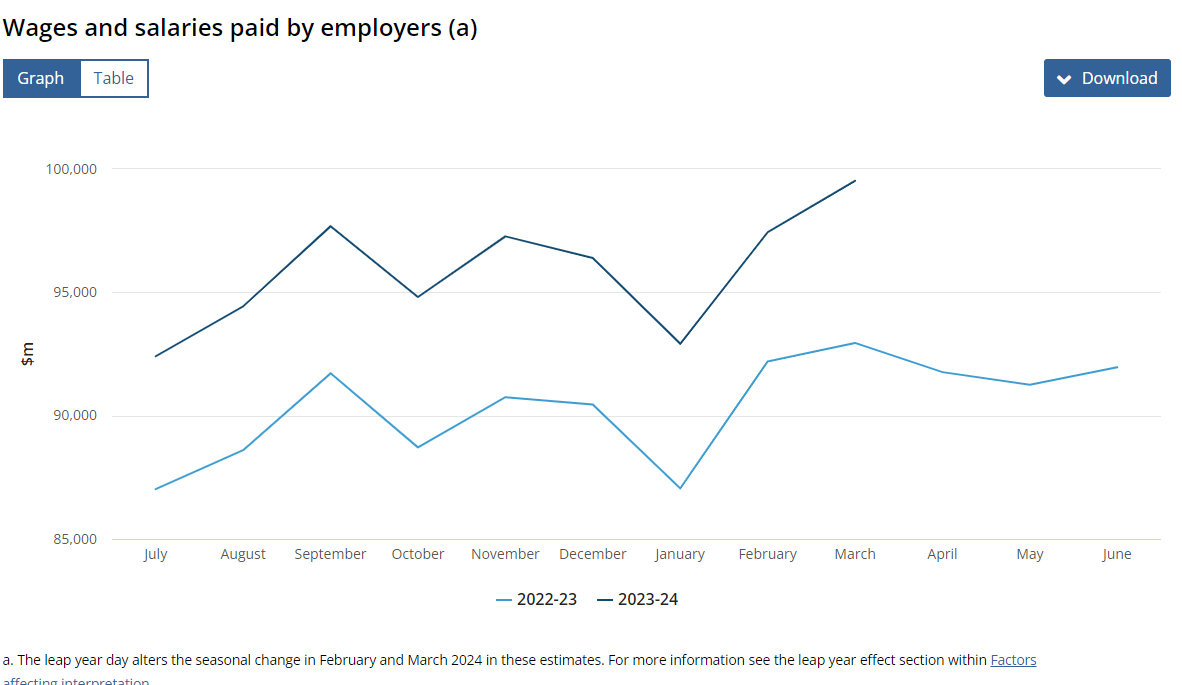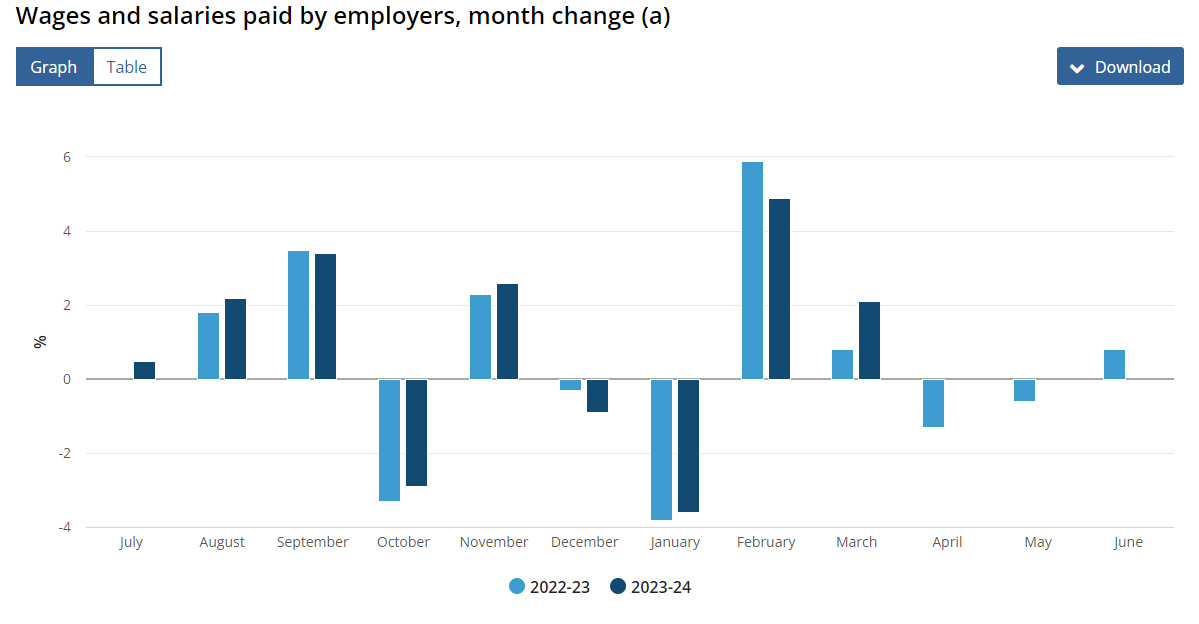

In March, total wages and salaries paid by employers in Australia reached a seasonal high of $99.5 billion, up 2.1% from the previous month, amounting to an additional $2.1bn, fresh ABS figures show.
Bjorn Jarvis (pictured above), ABS head of labour statistics, highlighted the annual growth.
“Total wages and salaries were $99.5bn in March 2024, up 7.1% from $92.9bn in March 2023,” Jarvis said in a media release. “This annual growth rate reflects the combined effects of changes over the year in underlying wage growth, hours worked, periodic payments like bonuses, and employment growth seen in other ABS labour statistics.”
Jarvis said March is typically when various industries distribute periodic bonuses, making it a seasonal peak within the financial year.
“This is where this monthly data, which is still relatively new and produced using Single Touch Payroll data from the Australian Taxation Office, gives us new insights,” he said.

Wages and salaries rose in 15 of 19 industries between February and March. The healthcare and social assistance industry saw a significant increase, contributing 20% of the $2.1bn rise.

Additionally, periodic bonuses in the mining, financial and insurance services, and manufacturing industries accounted for 42% of the monthly increase.
On a quarterly basis, total wages and salaries paid by employers grew more slowly in the March quarter, increasing by 0.5% (+$1.4b), compared to a 0.8% (+$2.3bn) rise in the March quarter, ABS figures showed.
Over the year to March, wages and salaries increased in 18 of 19 industries. The healthcare and social assistance industry led this growth with an increase of $1.6bn (12.6%), followed by public administration and safety (+10.1%), professional, scientific and technical services (+5.2%), and education and training (+7.7%). These four industries accounted for more than half of the annual increase.
All states and territories experienced a rise in wages and salaries between February and March.
New South Wales accounted for a third of the total wages and salaries, with a $560 million (1.7%) increase from February. Western Australia saw the largest proportional rise of 3.9% (+$445m), driven by bonuses in the mining industry.
Annually, NSW also had the highest increase in dollar terms with a rise of $1.9bn (6.2%) from March. Tasmania and the Australian Capital Territory recorded the highest annual growth rates at 10.2% and 10.1%, respectively, influenced by changes in wage policies and new enterprise agreements in public sector agencies.
For more details, read Monthly Employee Earnings Indicator, October 2023 to March 2024.
Get the hottest and freshest mortgage news delivered right into your inbox. Subscribe now to our FREE daily newsletter.
